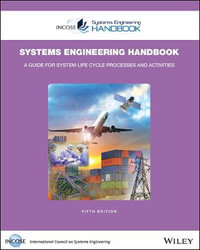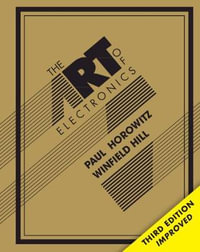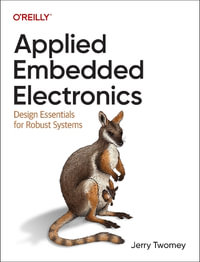| Preface | p. ix |
| Acknowledgements | p. xi |
| List of Figures | p. xiii |
| List of Tables | p. xix |
| List of Acronyms | p. xxi |
| Introduction | p. 1 |
| The need for a general framework for cross-layer design in wireless systems | p. 1 |
| Measuring performance in cross-layer design | p. 3 |
| The spectral efficiency | p. 3 |
| The delay | p. 5 |
| Considering multiple antennas | p. 6 |
| Considering Orthogonal Frequency Division Multiple Access (OFDMA) | p. 7 |
| Book structure | p. 8 |
| References | p. 10 |
| Different views of spectral efficiency | p. 13 |
| The capacity | p. 15 |
| Digital data modulation | p. 15 |
| The bit error rate (BER) | p. 16 |
| Channel coding | p. 17 |
| The packet error rate (PER) | p. 18 |
| Analytical approximation of PER curves | p. 20 |
| The throughput | p. 21 |
| Link adaptation | p. 24 |
| Analytical approximation of throughput envelope | p. 26 |
| Quality of service requirements | p. 27 |
| The average spectral efficiency | p. 29 |
| Summary | p. 31 |
| References | p. 31 |
| The cross-layer resource allocation problem | p. 35 |
| Allocating resources: time, power, space and frequency | p. 36 |
| Signal model for multi-user SIMO multiple access channel | p. 37 |
| The successive interference cancellation (SIC) receiver | p. 39 |
| Signal model for multi-user MISO broadcast channel | p. 40 |
| The resource allocation policy definition | p. 42 |
| The spectral efficiency region and the optimal resource allocation policy | p. 43 |
| A particular case: the capacity region | p. 49 |
| Summary | p. 52 |
| Annex: Examples of signal processing techniques | p. 53 |
| The bank of matched filters | p. 53 |
| The zero forcing (ZF) beamformer | p. 53 |
| The minimum mean square error (MMSE) beamformer | p. 54 |
| References | p. 55 |
| Cross-layer resource allocation in SISO systems | p. 57 |
| Mud scheduling: the optimal policy | p. 58 |
| Average power constraints | p. 60 |
| Instantaneous power constraints | p. 61 |
| Cross-layer approach to MUD scheduling | p. 64 |
| The average spectral efficiency region of MUD scheduling | p. 64 |
| An example of average spectral efficiency region in homogeneous networks | p. 66 |
| An example of average spectral efficiency region in heterogeneous networks | p. 67 |
| Total average throughput in networks with HMUD | p. 69 |
| HMUD and feedback information | p. 75 |
| Summary | p. 78 |
| References | p. 79 |
| Cross-layer resource allocation in SIMO systems | p. 81 |
| Cross-layer resource allocation with a ZF beamformer | p. 83 |
| The average throughput region of spatial multiplexing and scheduling | p. 86 |
| The total average throughput of spatial multiplexing and scheduling | p. 90 |
| Low complexity spatial multiplexing and scheduling policy | p. 94 |
| A closed form approximation for the average throughput in Rayleigh fading channels | p. 96 |
| Summary | p. 101 |
| References | p. 103 |
| Cross-layer resource allocation in MISO systems | p. 105 |
| Cross-layer resource allocation with a ZF beamformer | p. 107 |
| The optimal power allocation p*[subscript theta](H[subscript K]) with a ZF beamformer | p. 109 |
| The optimal spatial multiplexing and scheduling set K*[subscript theta](H) with a ZF beamformer | p. 112 |
| The average spectral efficiency region and the total average spectral efficiency | p. 112 |
| Low complexity spatial multiplexing and scheduling policy | p. 116 |
| A closed form approximation for the average throughput in Rayleigh fading channels | p. 118 |
| Summary | p. 121 |
| Annex: Water-filling algorithm with a ZF beamformer | p. 122 |
| References | p. 123 |
| Different views of delay in resource allocation for wireless systems | p. 125 |
| The delay metrics | p. 126 |
| The instantaneous delay | p. 127 |
| Instantaneous delay variation | p. 127 |
| Average delay | p. 128 |
| Worst-case delay | p. 129 |
| Sources of delay | p. 129 |
| The access delay | p. 130 |
| The queueing delay | p. 131 |
| Access delay on resource allocation | p. 131 |
| RR scheduling | p. 132 |
| Spatial multiplexing and scheduling with CSI | p. 135 |
| Proportional fair scheduling | p. 136 |
| Frame division scheduling | p. 139 |
| Queueing delay on resource allocation | p. 140 |
| Queueing delay parameters | p. 141 |
| The arrival process | p. 142 |
| Service time distribution | p. 142 |
| The available number of links | p. 143 |
| Queue's maximum allowed length | p. 143 |
| The total number of users in the system (Nt) | p. 144 |
| The service policy | p. 144 |
| Queueing delay and stability consideration | p. 145 |
| Summary | p. 147 |
| References | p. 148 |
| Orthogonal frequency division multiplexing | p. 151 |
| OFDM and OFDMA | p. 151 |
| Basic signal model | p. 153 |
| Resource allocation | p. 154 |
| Mimo-Ofdma | p. 156 |
| Summary | p. 159 |
| References | p. 160 |
| Index | p. 163 |
| Table of Contents provided by Ingram. All Rights Reserved. |
























